Nazanin Hedayat Munroe
The Talismanic Garment Series
I began the "Talismanic Garment Series" in January 2017, prompted by the changes we started seeing in our society—particularly the increase in overt prejudice and scorn towards all foreigners and people of color. Making a series of protective garments based on the idea of sacred symbols combined with text, I drew upon my research of early modern garments from my own heritage. I felt that protective icons and Sufi poetry by Rumi was the cloud of psycho-spiritual armor that I need to cloak myself—literally and metaphorically—from the evils and hazards lurking in the world. I designed a talismanic kaftan to create personal space by alerting people when they were too close using a proximity sensor: the lights turned green, yellow, or red to indicate safe, close, or too close. The "Talismanic Kaftan" is based on a warrior garment, representing my outer life working as an artist and professor in New York City, photographed on site for the performative image "NY: Struggle for Space" (2018). My inner life is about supplication and the search for internal peace, as seen in the “Talismanic Gown” and the performative image "CA: Supplication for Serenity" (2018). The gown is my West coast prayer dress, photographed in California as I stood in a gesture of supplication at the edge of the Pacific Ocean. Both garments incorporate Rumi poetry as the protective prayer. I hope someday to live in a world that doesn’t feel overrun by spiritual and physical illnesses and social discord, but I’m not sure we will ever set our talismans aside.

Talismanic Ensemble for the Era of COVID-19, 2020
Handmade screen-printed silk organza cloak, and digitally printed cotton dress
Courtesy of the Artist
Photo credit: Anthony Witt
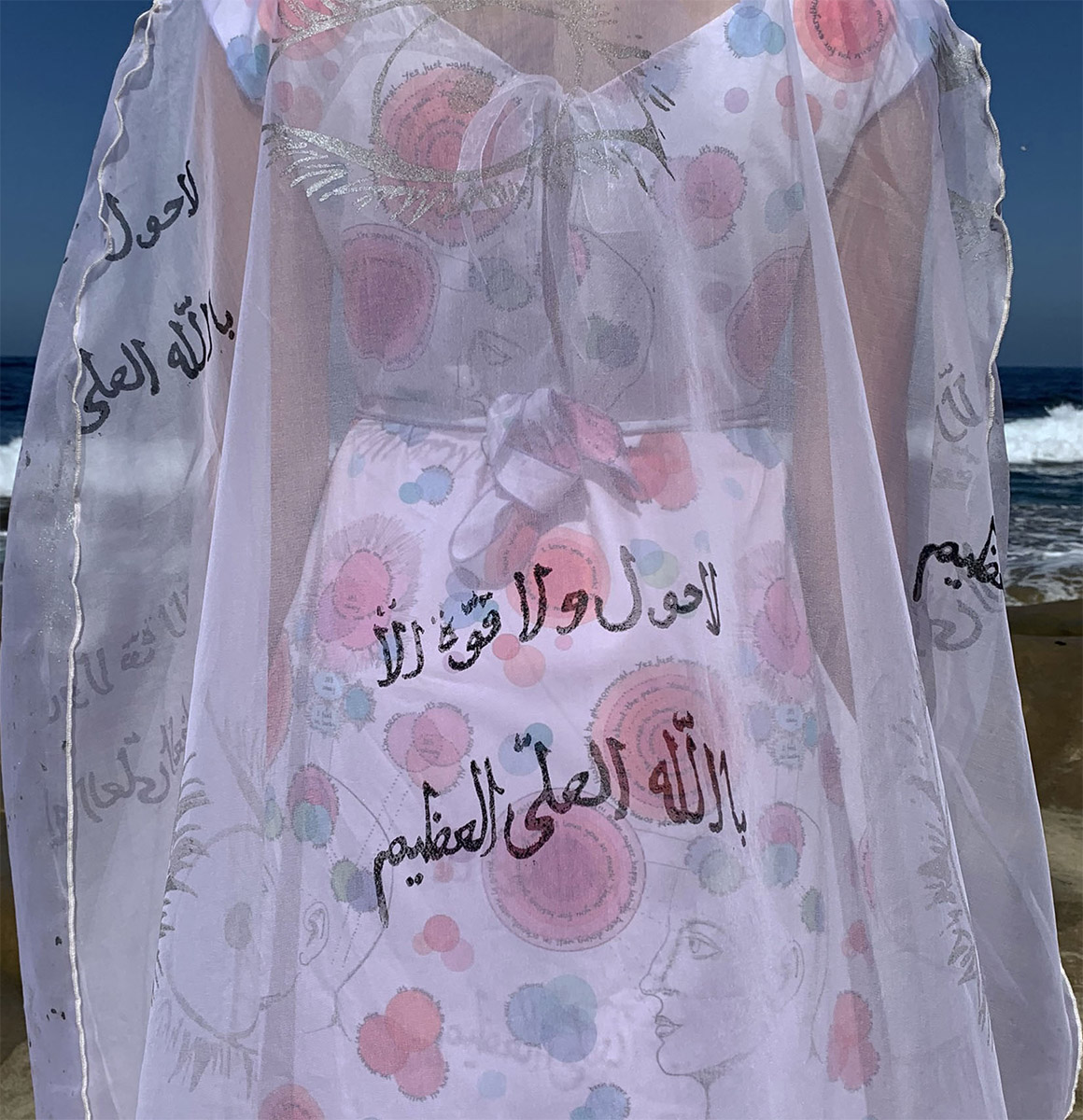
Talismanic Ensemble for the Era of COVID-19 (Detail), 2020
Handmade screen-printed silk organza cloak, and digitally printed cotton dress
Courtesy of the Artist
Photo credit: Anthony Witt
Talismanic Ensemble for the Era of COVID-19, 2020
This "Talismanic Ensemble" is part of a series of protective garments I’ve been making since 2017. The inspiration came from my research of talismanic garments inscribed with astrological symbols and Qur’anic text, used as protective garments during the early modern era in the Islamic world. These garments protected against the “evil eye” (warded off with the image of an eye), black magic, wounds and illness, by creating a barrier with positive language. Words can protect in folk tradition too: mothers in Iranian culture pray for the well-being of their children by whispering protective verses and blowing the words around their heads like a magic cloud—something that my own mother did for me as a child.
This ensemble is my attempt to create a protective cloud in this era of COVID-19, which is marked not only by illness, but also by fear and anger—things that have been present in civilization for millennia. These talismanic garments were traditionally worn underneath regular clothes, as if they would lose their power if exposed. In this series, I am reversing this practice by putting the protective images, and verses—which include mystic poetry and personal supplications—on the outside of the garment. The dress is printed with a pattern of a head sprouting positive thoughts, representing the inner self. The cloak is a physical barrier representing the social distance that separates all of us into bubbles of fear and isolation.
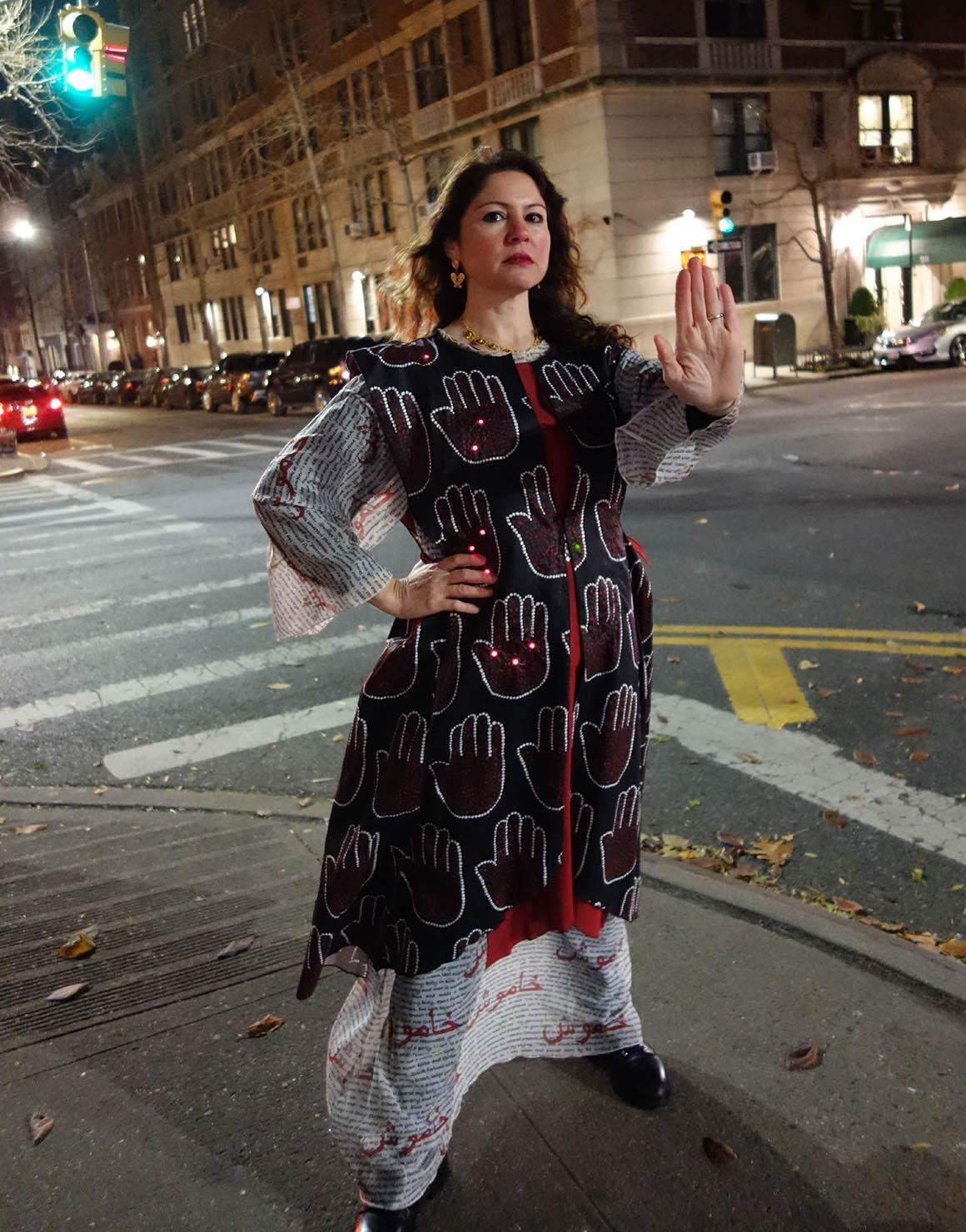
Talismanic Kaftan, 2018
Digital print on cotton sateen, conductive thread, LED neopixels and micro controller
Courtesy of the Artist
Photo credit: Alia Shenasa
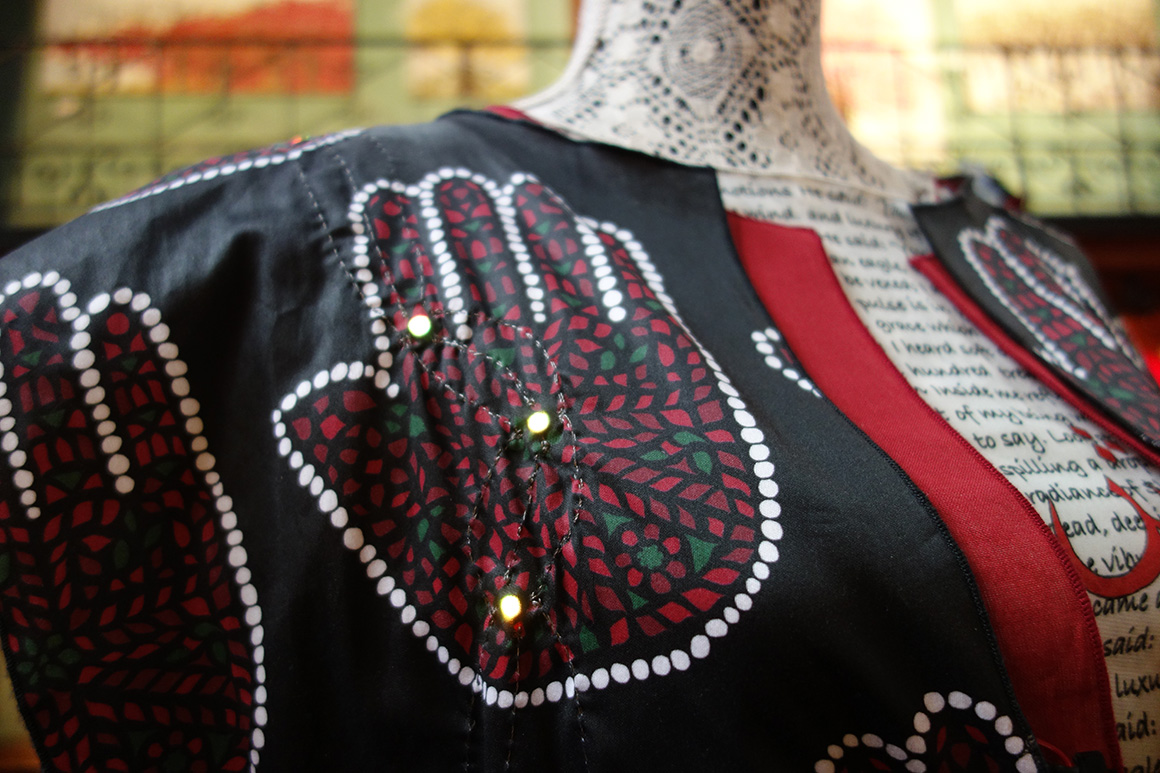
Talismanic Kaftan (Detail), 2018
Digital print on cotton sateen, conductive thread, LED neopixels and micro controller
Courtesy of the Artist
Photo credit: Alia Shenasa
Talismanic Kaftan, 2018
The "Talismanic Kaftan" is based on my research of cloth and garments as protective devices in Middle Eastern culture. For this piece, I have constructed a “Smart textile” that speaks to the viewer, rather than the wearer: if the viewer gets too close, the colors change and blink. They hold a steady light in green when the viewer maintains a safe distance. Although this piece was constructed before the 2020 pandemic, the concept of social distancing has added additional challenges to establishing individual comfort levels with physical interaction, making it that much more important to communicate with visual symbols. The use of light here is also a reference to Divine protection and enlightenment.
The digital print on the kaftan is based on a “Khamsa,” a talismanic symbol usually made of metal and carried on the top of a standard when soldiers went into battle or worn as jewelry around the neck. Protective talismanic clothing was also worn on the body, inscribed with Qur’anic verse or Sufi poetry. Here, I have united these separate practices by creating a repeat pattern and printing it on the fabric. The undergown contains verses by Jalaluddin Rūmī, a twelfth century poet whose poetry was often reproduced in other media. The poem is translated to English, but I have kept the Persian word Khamūsh: in Rūmī’s medieval poems this means “silence” and is used by Rūmī to indicate the end of his ecstatic rantings; in contemporary vernacular, this means “to turn off,” i.e. lights. Essentially, the garment in this context functions as psycho-spiritual armor.
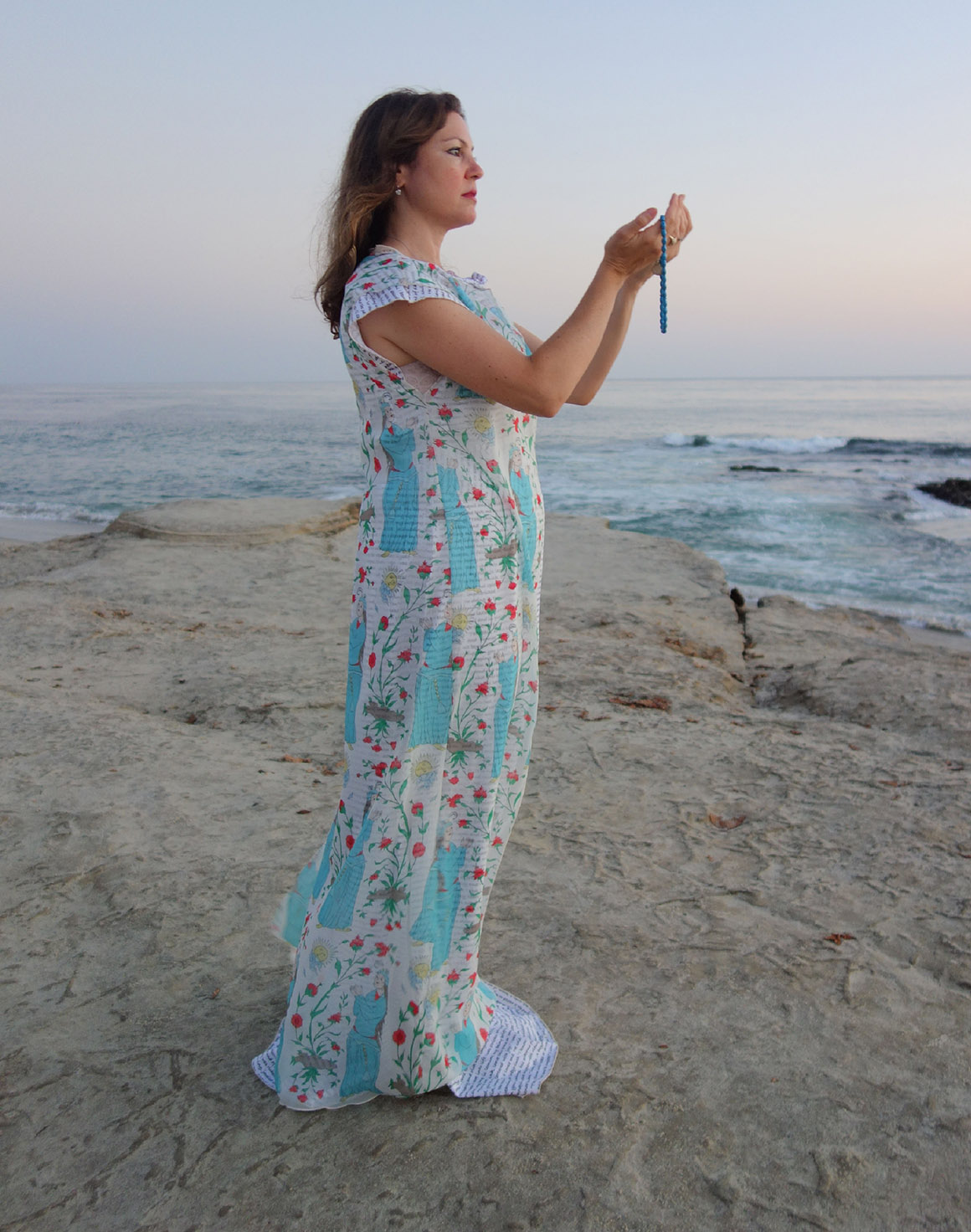
Talismanic Gown, 2018
Handmade dress; digitally printed chiffon and santeen
Courtesy of the Artist
Photo credit: Dr. Kamyar Hedayat
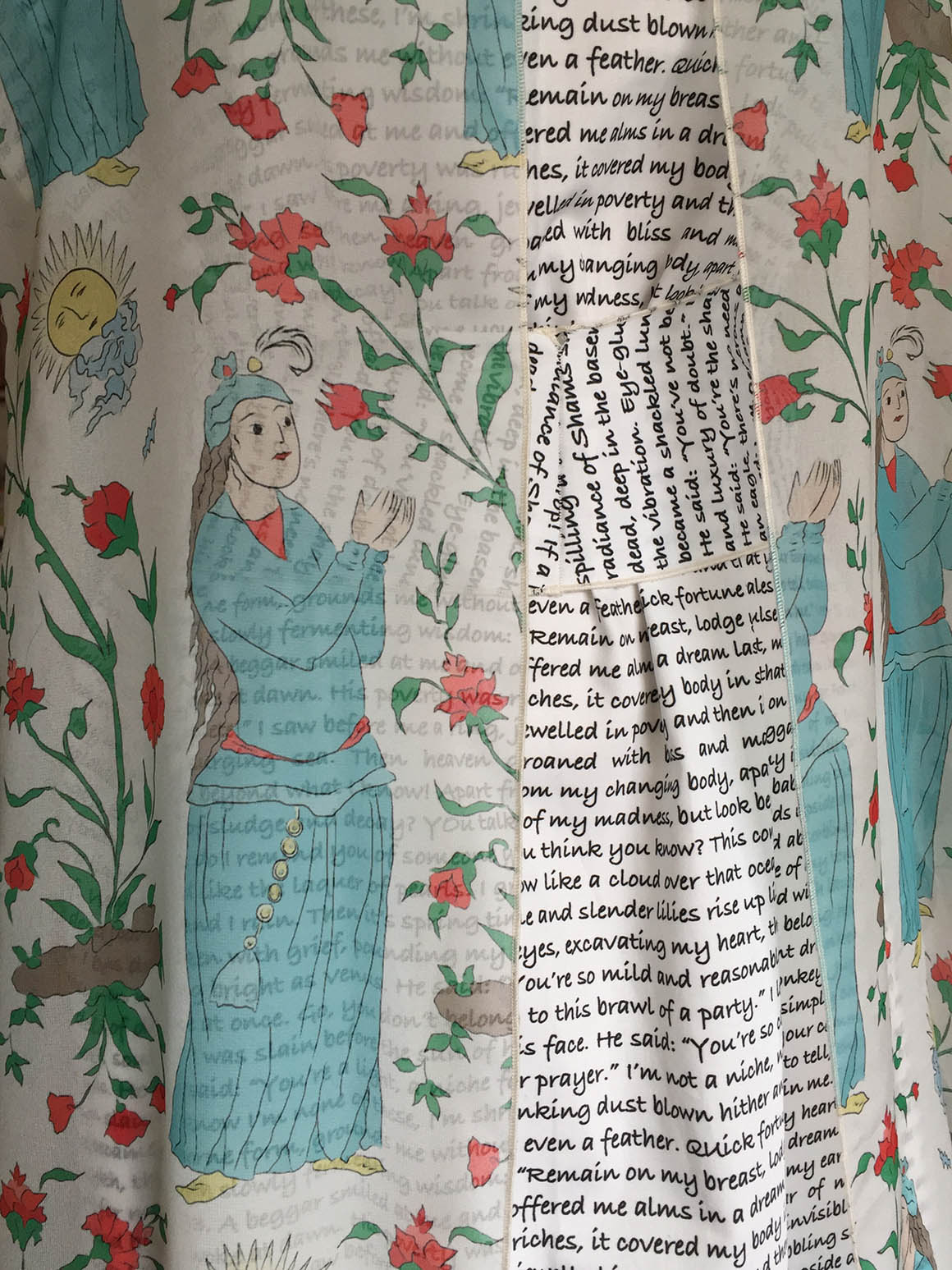
Talismanic Gown (Detail), 2018
Handmade dress; digitally printed chiffon and cotton santeen
Courtesy of the Artist
Photo credit: Dr. Kamyar Hedayat
Talismanic Gown, 2018
The "Talismanic Gown" is based on my research of garments as protective devices and images on clothing as a powerful tool for communicating identity. The sheer overgarment is digitally printed with a design inspired by a 17th century Safavid velvet, referenced as the “Supplicant” pattern by scholars. The supplicant depicted on cloth is in a traditional pose of du’a (supplication) as she converses with the Divine. By donning the garment, the wearer becomes the supplicant by displaying her image on the garment, indicating her piety to the viewer.
The undergown contains verses by Jalaluddin Rūmī, a twelfth century poet whose poetry was often reproduced in other media, digitally printed here on cotton. The poem creates a protective forcefield around the wearer, whose prayer becomes mingled with Sufi mystic expression. Sometimes we communicate the most through silence.
-
About the Artist
Nazanin Hedayat Munroe is an artist, designer and historian specializing in textiles and costume. Dr. Hedayat Munroe received her Ph.D. from University of Bern, Switzerland and M.A. from San Jose State University in art history, specializing in historic textiles from the Early Modern Persianate World. Dr. Hedayat Munroe is currently Director of Textile Technology and a tenure-track Assistant Professor of Business & Technology of Fashion at CUNY - NYC College of Technology, where she lectures on textiles, historic dress, and contemporary issues in the fashion industry. From 2011—2016 she worked at The Metropolitan Museum as a textile specialist, publishing several articles and teaching courses at the museum in her area of expertise.
A nationally acclaimed textile artist and NEA grant recipient, her installations and research focus on expressions of cultural identity expressed through clothing, ranging from complex woven designs to digitally printed and smart textiles. She received her M.F.A. from Cranbrook Academy of Art and B.F.A. from Savannah College of Art and Design in textile design and fiber art. She has exhibited her garments and textile-based installations at several museums including the M.H. De Young Memorial Museum, The Metropolitan Museum of Art, Cranbrook Art Museum, San Jose Museum of Art, and The San Jose Museum of Quilts and Textiles.
 Talismanic Ensemble for the Era of COVID-19, 2020
Talismanic Ensemble for the Era of COVID-19, 2020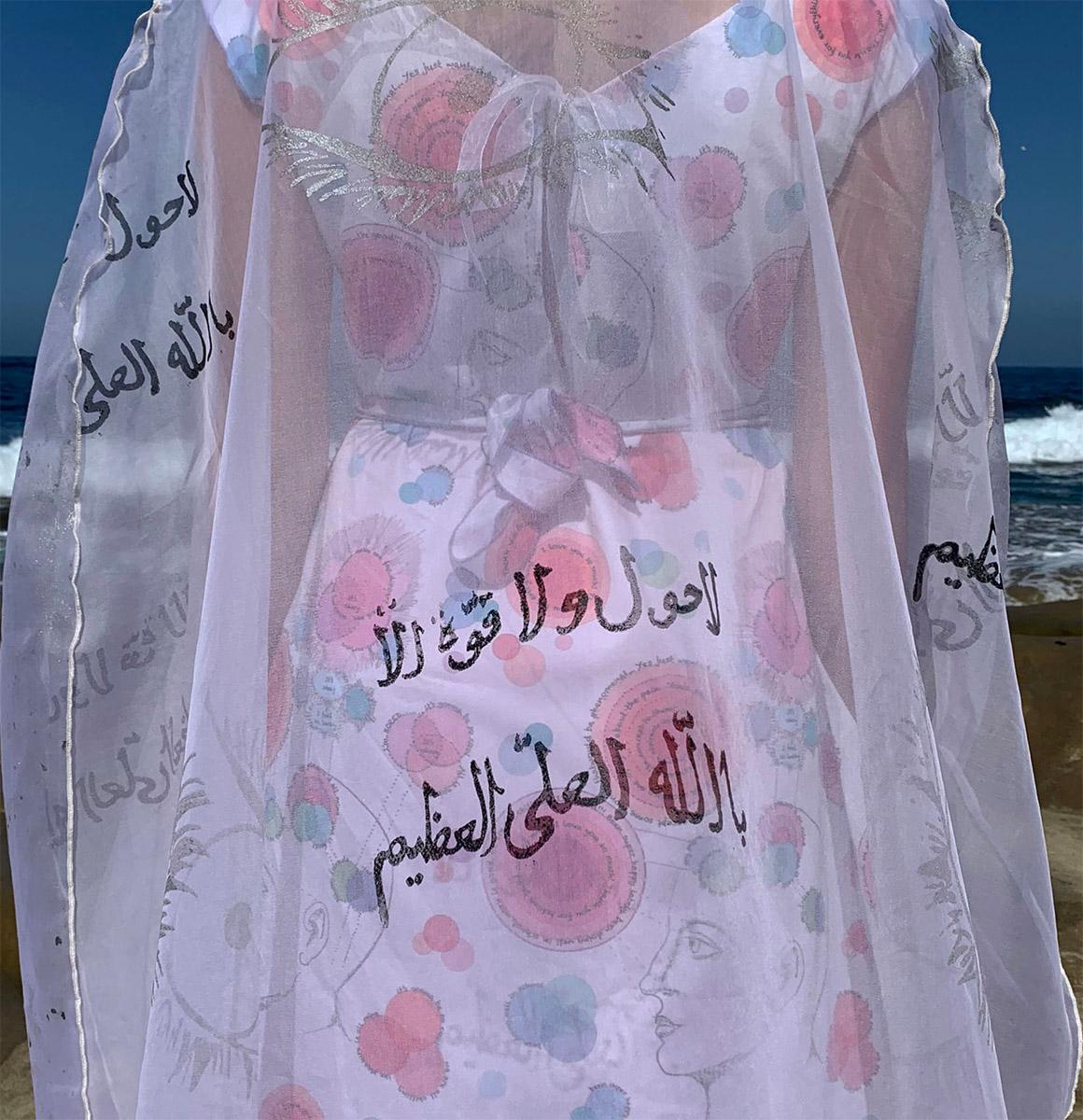 Talismanic Ensemble for the Era of COVID-19 (Detail), 2020
Talismanic Ensemble for the Era of COVID-19 (Detail), 2020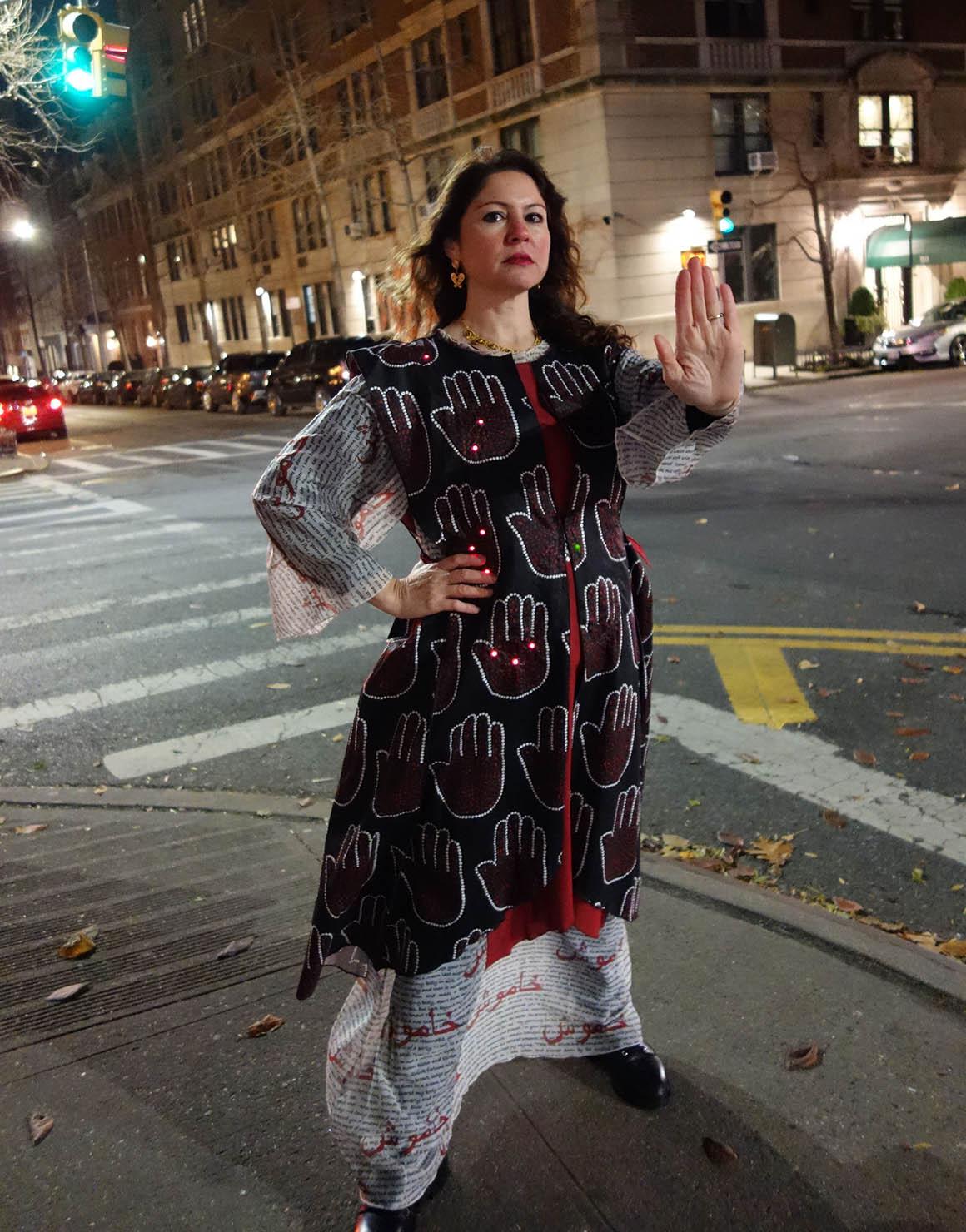 Talismanic Kaftan, 2018
Talismanic Kaftan, 2018 Talismanic Kaftan (Detail), 2018
Talismanic Kaftan (Detail), 2018 Talismanic Gown, 2018
Talismanic Gown, 2018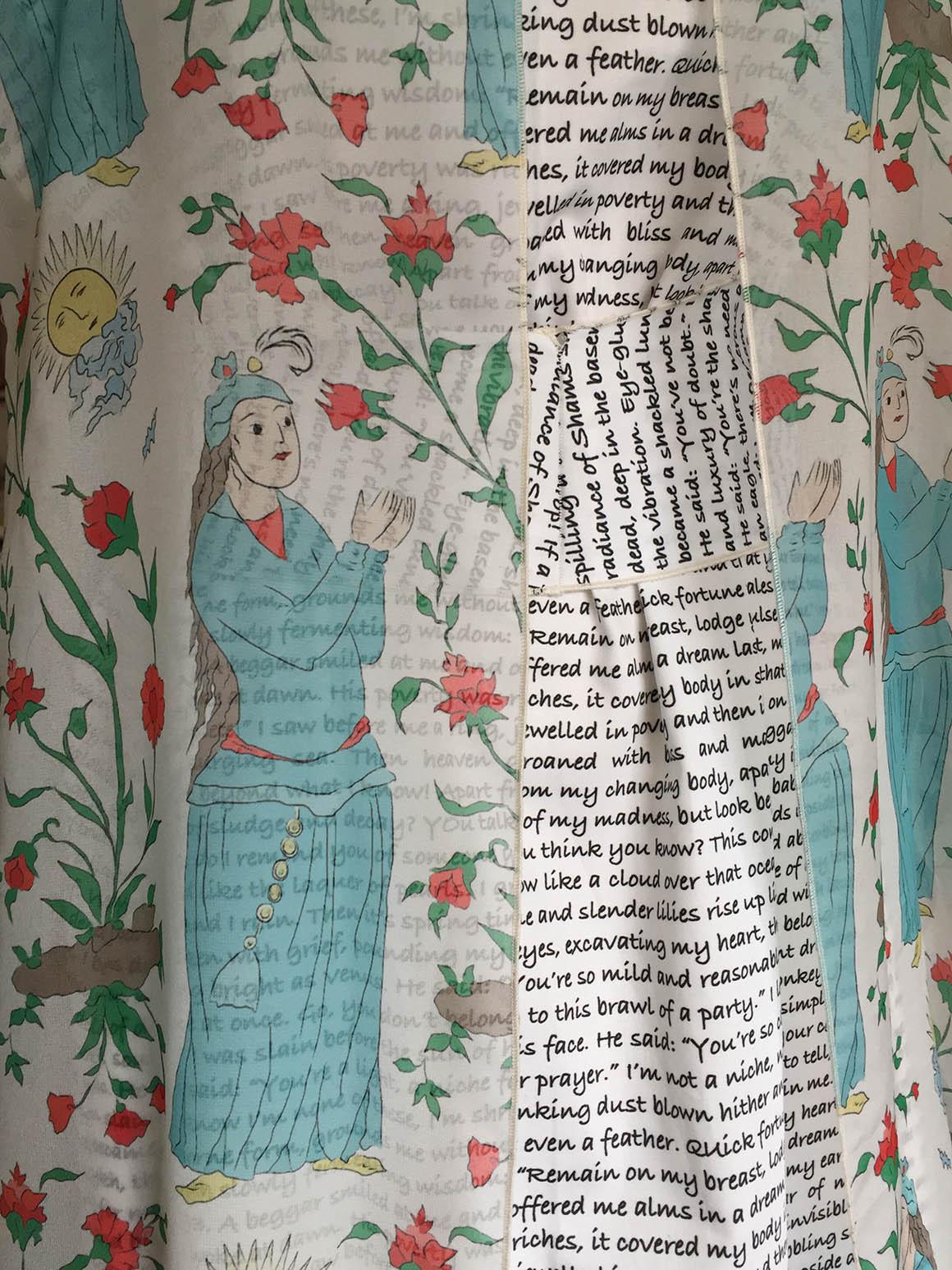 Talismanic Gown (Detail), 2018
Talismanic Gown (Detail), 2018